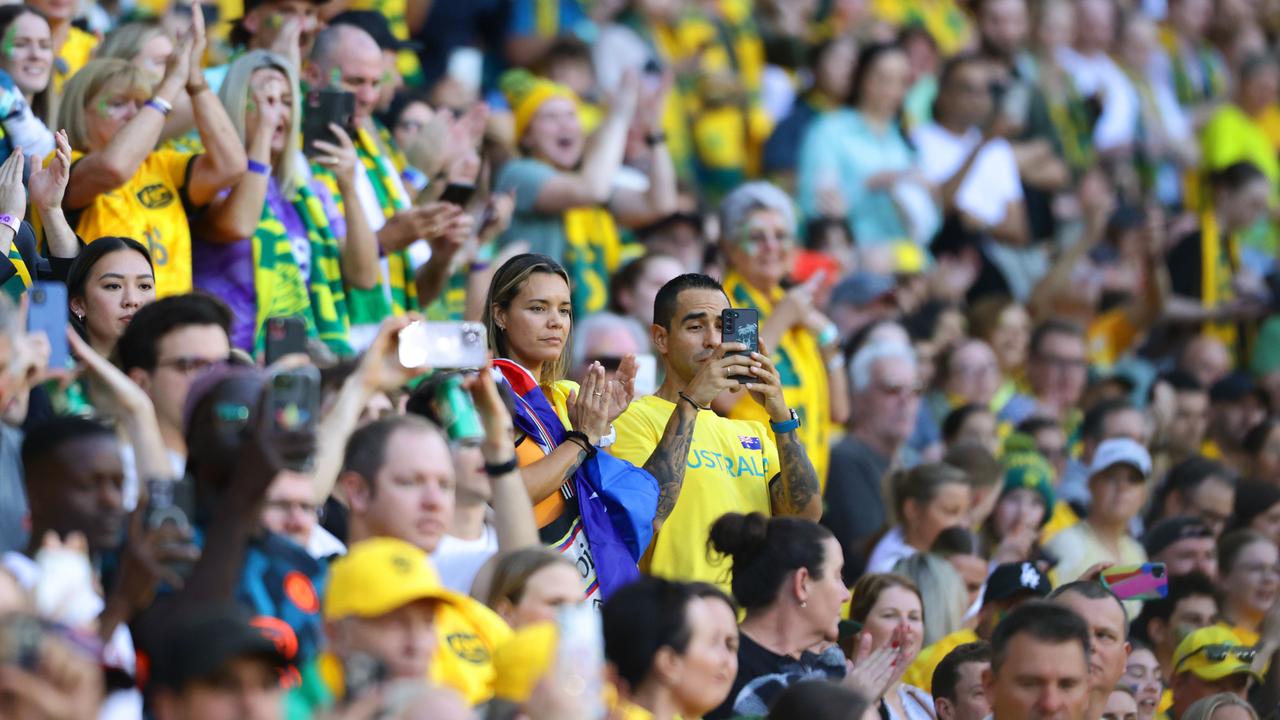All eyes are on the Matildas in their push for a first World Cup but there’s a glaring problem no one is talking about.
Despite record-breaking viewer numbers and crowd attendances, the Matildas are only set to receive prize money of $6.7 million if they win the FIFA Women’s World Cup.
That figure is barely 10 per cent of the amount awarded to Argentina, the winners of last year’s FIFA Men’s World Cup.
And in an even bigger financial blow, the prize money on offer for the winning women’s team is shockingly $13 million less than what the Australian men’s team earned in prize money, despite being knocked out of the competition in the round of 16.
Argentina received $65 million in prize money for their 2022 win while the Socceroos scored a $20 million payday.

Matildas players celebrate winning the quarterfinal match against France at Brisbane Stadium. Picture Lachie Millard

Matildas captain Sam Kerr during the semi-final against France. Picture: Bradley Kanaris/Getty Images

Socceroos captain Mathew Ryan at the 2022 World Cup in Qatar. Picture: Mohamed Farag/Getty Images

Argentina’s captain Lionel Messi celebrates his team’s $65 million win. Picture: Anne-Christine Poujoulat / AFP
The total $170 million in prize money stumped up by FIFA for this year’s Women’s World Cup falls well short of the $680 million FIFA splashed for the Men’s World Cup.
But the Matildas are better off than female football players in many other countries, thanks to a collective bargaining agreement struck with Football Australia in 2019 which has equalised pay and conditions in many areas between the Matildas and the Socceroos.
Despite a clause in the agreement giving the Matildas the right to the same percentage of their prize money as the Socceroos, the Matildas will receive far less, even though they have advanced deeper into the competition, due to the disparity between the prize money pools on offer.
It’s a problem the Matildas are well aware of; before the tournament they released a video on social media to draw attention to the huge gaps in pay between the men’s and women’s games.
Prize money for the world cup is determined by sponsorships, broadcast rights, attendance and merchandise sales. Those who argue against equal prize money say women don’t generate as much revenue as men in these areas.
But Saturday’s heart-pounding quarterfinal against France had an average audience of 4.17 million, with the total overall audience peaking at 7.2 million during the penalty shootout, making it the most watched event in Australia since Cathy Freeman won Olympic Gold in 2000.
It’s a record that’s likely to be smashed in Wednesday night’s semi-final against England.
It makes the $10.4 million Optus Sport paid for the women’s tournament (it then on-sold some games to the Seven Network) look like great value, compared to the $20 million paid by SBS for the broadcast rights to the Men’s World Cup in Qatar, the final of which attracted an average audience of just 976,000 viewers.
Attendance has also been beyond expectations during this world cup with a record crowd of 75,784 fans watching the Matildas beat Ireland in their opening match. The opening match of the 2022 Men’s World Cup in Qatar was attended by 67,000 fans.

Sports fans have been turning out in force to watch Women’s World Cup matches. Picture Lachie Millard
“Attendance records have been set in Australia with an average of over 30,000 for each match, and new broadcast records being set,” James Johnson, CEO of Football Australia said.
When it comes to merchandise sales, Nike has previously confirmed the Matildas sold more official jerseys on July 19, the day before the Women’s World Cup tournament started, than the Socceroos sold before, during and since the 2022 Men’s World Cup in Qatar.
According to the FIFA website: “At the end of the Group Stage, records have been broken in areas as diverse as ticket sales, broadcast figures and digital media data.”
FIFA has previously said it is aiming for pay parity between the men’s and women’s tournaments by the time of the next world cups in 2026 and 2027 respectively, although there is no written agreement it will do so.
It’s hoped figures like these will drive those responsible for negotiating sponsorships, ticket prices and broadcast rights to place a higher value on the women’s game.



Leave a Reply